How High Can a Rabbit Jump: Unveiling the Acrobatic Prowess of Bunnies
Think rabbits are just cute, fluffy creatures? Think again. In this blog, we're going to uncover the jaw-dropping acrobatic abilities of these seemingly innocent animals!

Key Takeaways:
- Rabbits, both wild and domestic, can jump impressively high, often reaching heights of up to four feet.
- The jumping ability of a rabbit is influenced by its breed, age, and overall health.
- Rabbit owners should be mindful of their pets' jumping capabilities to ensure their safety and well-being.
Rabbits are fascinating creatures, not just for their long ears and fluffy tails, but also for their remarkable physical abilities. One of the most intriguing questions pet owners and animal enthusiasts ask is, "how high can rabbits jump?" This article will hop into the world of rabbits to explore their jumping capabilities, the factors that influence how high they can leap, and what this means for both wild and domestic rabbits.
The Athleticism of Rabbits: A General Overview
Rabbits are known for their agility and speed, which are crucial for escaping predators in the wild. Their powerful hind legs allow them to make significant leaps, both vertically and horizontally. Most rabbits can jump to impressive heights when necessary, with some breeds capable of reaching up to four feet high. This ability is not just a means of survival; it's also a way for rabbits to express joy and explore their environment. According to the House Rabbit Society, a rabbit can jump up to 3 feet high and can also jump up to 4 feet horizontally.
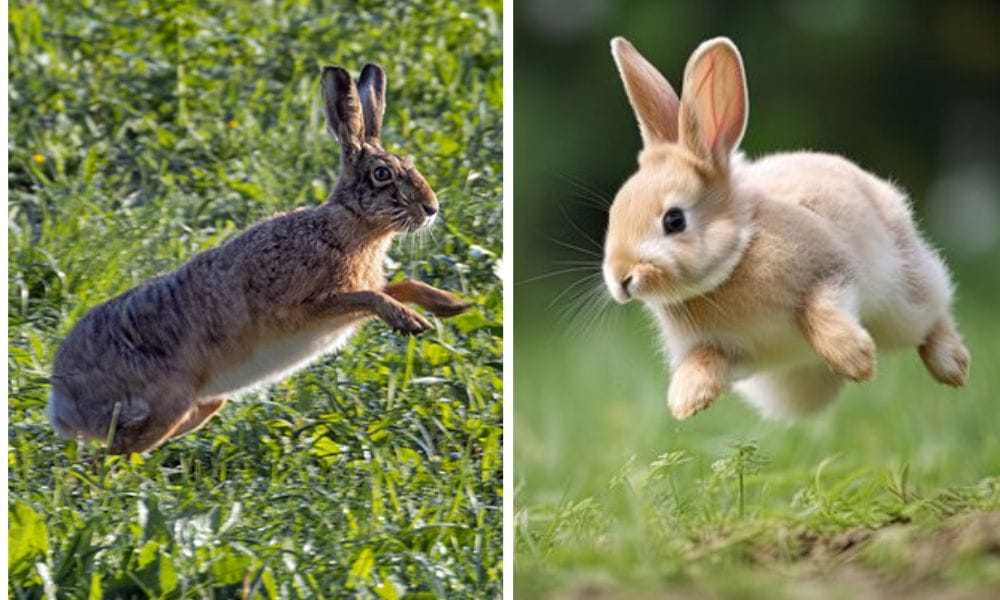
Understanding Rabbit Breeds and Jumping Ability
Not all rabbit breeds are created equal when it comes to their jumping prowess. Larger breeds like the Checkered Giant may not jump as high as smaller, more agile breeds. Conversely, breeds such as the American Sable, known for their muscular hind legs, can leap great distances and heights. Pet owners should be aware of their rabbit's breed-specific capabilities to provide appropriate care and housing.
The Role of Age and Health in a Rabbit's Jump
As with other animals, a rabbit's ability to jump depends largely on its age and health. Baby rabbits jump with less force and height than their adult counterparts. Older rabbits may also have reduced jumping ability due to joint issues or other health concerns. Ensuring a rabbit maintains a healthy weight and receives proper nutrition can significantly impact its ability to safely jump and remain agile.
Rabbit Jumping Competitions: A Display of Leporine Athletics
Rabbit jumping competitions, akin to equestrian show jumping, showcase the remarkable agility of these animals. In these events, rabbits can jump obstacles of varying heights, demonstrating that with training, some domesticated rabbits can jump higher than the average rabbit's natural leap. The Guinness World Record for the highest rabbit jump is testament to the extraordinary capabilities of these furry athletes.
The Science Behind the Leap: Rabbit Anatomy
The secret to a rabbit's jumping ability lies in its anatomy. Rabbits have four limbs that work in unison to propel them off the ground. Their muscular hind legs are significantly stronger and larger than their front legs, allowing them to push off with great force. This muscular structure, combined with a lightweight skeleton, enables rabbits to perform jumps at high speeds and for short bursts. Some rabbit species are also capable of making long leaps across fields, displaying a combination of speed and their jumping excellence.
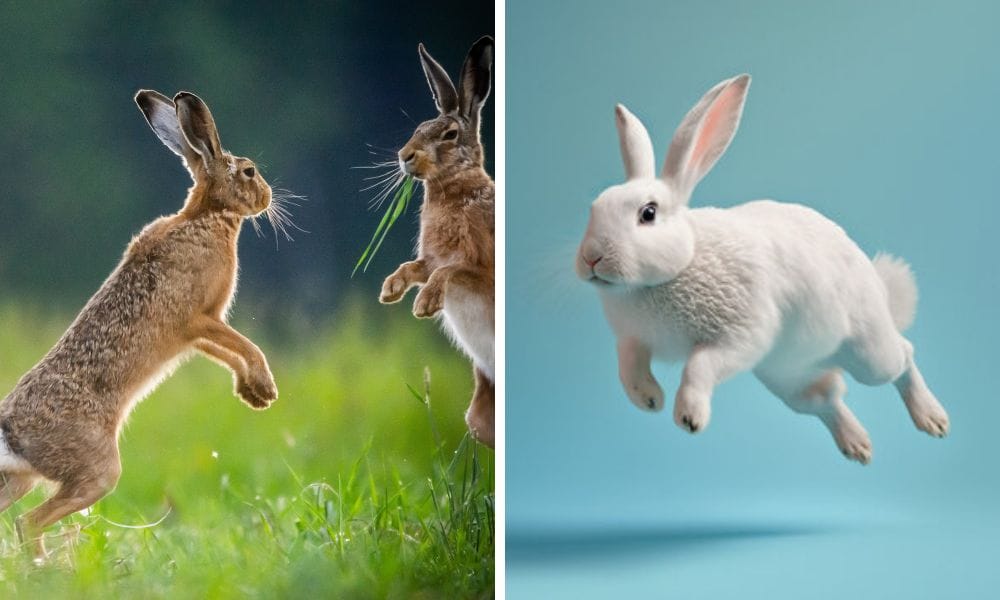
The Intricacies of Rabbit Jumping Techniques
Have you ever watched in awe as a wild rabbit effortlessly clears a fence or a pet bunny hops over a barrier in your garden? The technique a rabbit employs to jump is as critical as its physical ability. When a rabbit prepares to jump, it assesses the height and distance before propelling itself forward. The hind legs, packed with powerful muscles, thrust the rabbit into the air, often reaching heights that surprise their human companions. This is not just about raw strength; it's about the finesse with which each rabbit makes its leap, a skill honed by both instinct and practice.
In contrast to other breeds, some rabbits have developed jumping techniques that allow them to navigate their environment more effectively. For instance, rabbits run and leap in the wild to escape predators, using a zigzag pattern to throw off their pursuers. This technique involves a combination of high jumps and sharp turns. Pet bunnies might not face the same dangers, but they still exhibit this behavior during play or when startled. Observing these techniques can provide valuable insights into a rabbit's ability to adapt its jumping strategy to different situations.
Maximizing Your Rabbit's Ability: Training and Exercise Essentials
Rabbits are natural athletes, and with the right training and exercise, their ability to jump can be significantly enhanced. To maximize your rabbit's ability, it's crucial to start with a consistent and gradual training regimen. Begin with low obstacles and gradually increase the height as your bunny becomes more confident and physically adept. This not only improves their jumping skills but also ensures they are getting the necessary exercise to maintain a healthy weight and muscle tone. Regular training sessions will help your rabbit reach its full athletic potential while also strengthening the bond between you and your pet.
Moreover, exercise is not just about physical health; it's also about mental stimulation. Rabbits are intelligent creatures that require mental challenges to stay happy and engaged. Incorporating variety into their training, such as different types of jumps or introducing new obstacles, can keep their minds active and curious. This variety can prevent boredom and associated behavioral issues. By understanding and nurturing your rabbit's ability through thoughtful exercise, you're providing a foundation for a lively and spirited companion.
For the excersices you can use harness for your rabbit, see more details in our blog below.
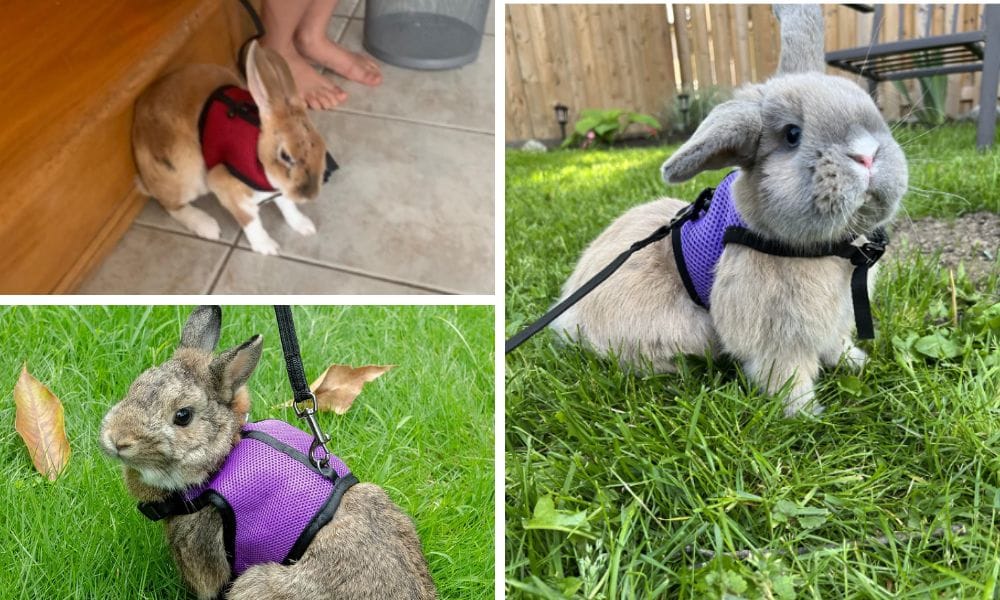

Rabbit's Ability and Nutritional Support: The Dietary Connection
To jump high, a rabbit's ability is not solely dependent on physical training; nutrition plays a pivotal role as well. A balanced diet is essential for providing the energy and nutrients necessary for strong muscle development and overall agility. High-quality hay should be the cornerstone of your rabbit's diet, supplemented with a variety of vegetables, leafy greens, and a limited amount of pellets. These foods are rich in fiber, which is crucial for a rabbit's digestive health, and they also provide the necessary vitamins and minerals to support robust musculoskeletal growth.
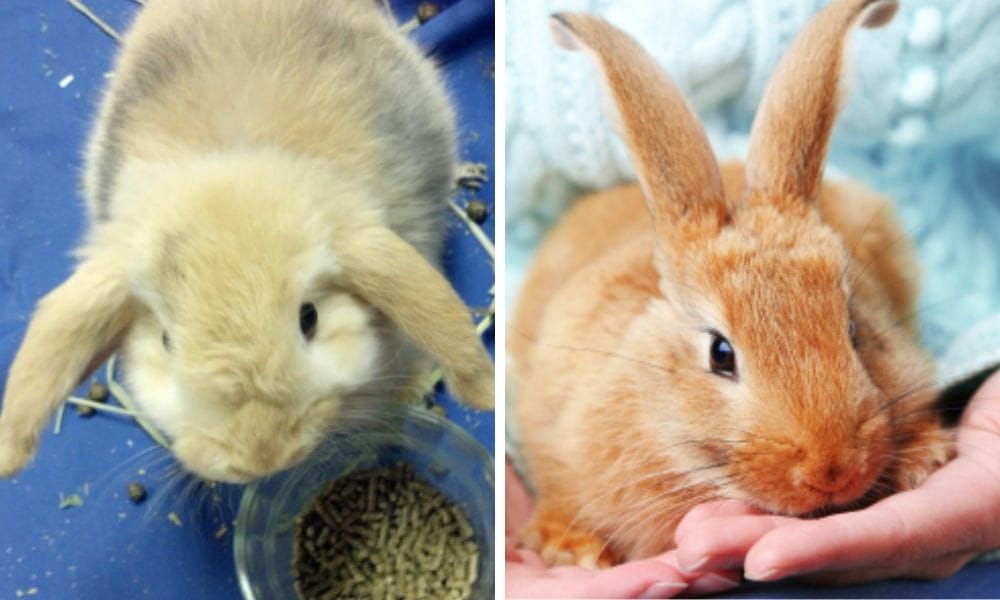
In addition to a balanced diet, ensure your rabbit has access to clean, fresh water at all times. Hydration is key for maintaining a rabbit's health and optimizing their ability to perform physically demanding activities like jumping. Be mindful of treats, as excessive sugary or fatty snacks can lead to weight gain, which can impede your rabbit's ability to jump and may cause other health issues. By paying close attention to your rabbit's nutritional needs, you're setting the stage for a healthy, active, and high-jumping bunny.

Rabbit Jumping: A Comparative Look at Different Breeds
When discussing how high rabbits can jump, it's fascinating to note the variation among different breeds. While the average rabbit can jump up to three feet vertically, some breeds are known to exceed this standard. For example, the Belgian Hare, with its long, powerful legs, is akin to the high jumper of the rabbit world, capable of reaching impressive heights from ground level. On the other hand, other rabbits, such as the Netherland Dwarf, may not reach the same vertical heights due to their smaller stature, but they still possess a remarkable ability to hop and dart around obstacles with agility.
The comparison becomes even more intriguing when we consider the differences between wild rabbits and domesticated pet bunnies. Wild rabbits are often in peak physical condition due to their lifestyle, which requires constant vigilance and the ability to escape predators. This necessity to survive in the wild means that their jumping ability is fine-tuned and often exceeds that of domestic rabbits. However, with proper care and training, pet bunnies can develop their jumping skills to rival those of their wild counterparts, making for an exciting and enriching experience for both the rabbit and its owner.
Wild Rabbits and Their Survival Instincts
In the wild, rabbits are prey animals, and their ability to jump high is a critical survival mechanism. Escaping predators often requires wild rabbits to leap over obstacles such as wire fences or chicken wire. Their natural instinct to run and jump at high speeds helps them navigate the dangers of the animal kingdom and maintain their place in the food chain.
Domestic Rabbits: Ensuring Safety at Home
For pet rabbits, the ability to jump can lead to exploration and sometimes mischief. Rabbit owners need to be extra cautious and consider "bunny proofing" their homes to prevent their pets from jumping into dangerous areas or escaping. This includes securing windows, blocking off stairs, and ensuring that outdoor enclosures are equipped to contain a rabbit's impressive leap.
The Impact of Environment on a Rabbit's Jump
The environment in which a rabbit lives can also affect its jumping ability. Rabbits hopping in a spacious area are more likely to develop stronger muscles and greater jumping skills. Conversely, rabbits kept in confined spaces may not have the opportunity to exercise their jumping ability, which can lead to a decrease in muscle tone and overall health.
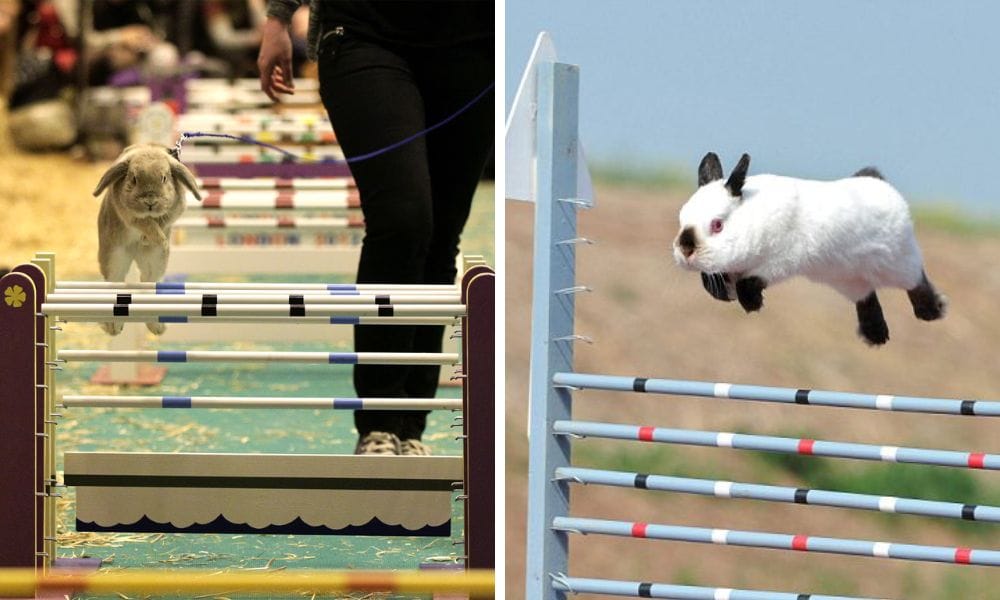
Fun Obstacle Courses: A Way to Enhance Your Rabbit's Skills
Creating a fun obstacle course for your pet bunny can provide mental stimulation and physical exercise. These courses can include ramps, tunnels, and jumps that encourage your rabbit to jump and enjoy climbing. Not only does this activity strengthen their muscles, but it also provides a bonding experience for pet owners and their rabbits.
The Connection Between Jumping and Rabbit Emotions
Rabbits don't just jump to escape predators or navigate their environment; they also jump to express emotions. A happy rabbit may perform a jump known as a "binky," where the rabbit jumps into the air and twists its body and head in opposite directions. This behavior is a clear sign of a content and joyful rabbit.
Preparing for the Unexpected: When a Rabbit Jumps Too High
While rabbits can jump high, they can also misjudge distances and heights, leading to falls. A rabbit fall can result in injuries, so it's important for rabbit owners to monitor their pets' activities and provide safe jumping opportunities. Ensuring that your rabbit has a soft landing area and isn't jumping from excessive heights can help prevent accidents.
Summary
Rabbits are incredible jumpers, with some breeds and individuals capable of reaching heights of up to four feet. Their jumping ability is influenced by factors such as breed, age, health, and environment. Understanding and accommodating a rabbit's natural inclination to jump is essential for pet owners to ensure their furry friends' safety and happiness. Whether in the wild or at home, a rabbit's ability to leap great distances is a remarkable aspect of their behavior and physicality.
FAQ Section
Q: How high can a rabbit jump? A: Most rabbits can jump up to two feet high, but some breeds and trained rabbits can reach heights of up to four feet.
Q: Can all rabbit breeds jump the same height? A: No, different rabbit breeds have varying jumping abilities. Smaller, more agile breeds can often jump higher than larger breeds.
Q: What can I do to ensure my pet rabbit's safety when jumping? A: Ensure your home and garden are "bunny proofed" to prevent escapes and injuries. Provide a safe environment with soft landing surfaces and avoid letting your rabbit jump from excessive heights.

